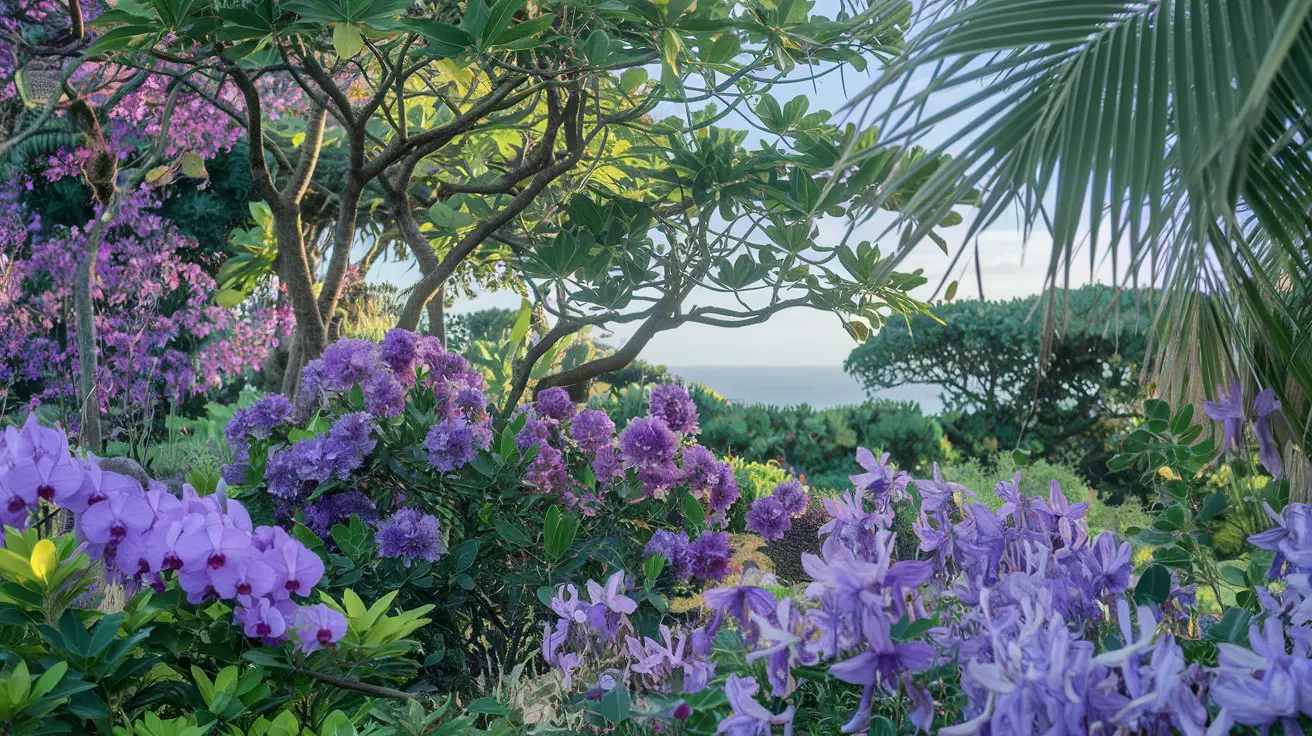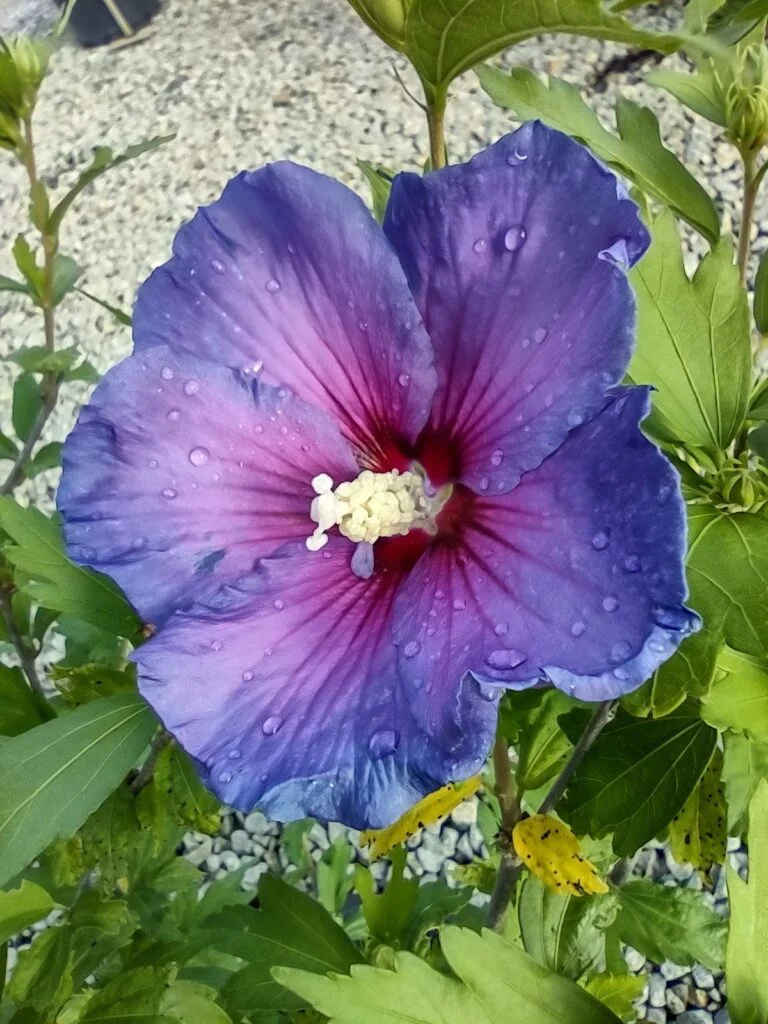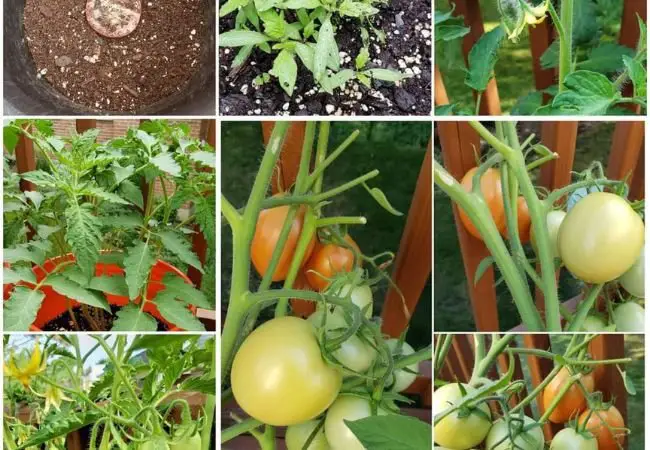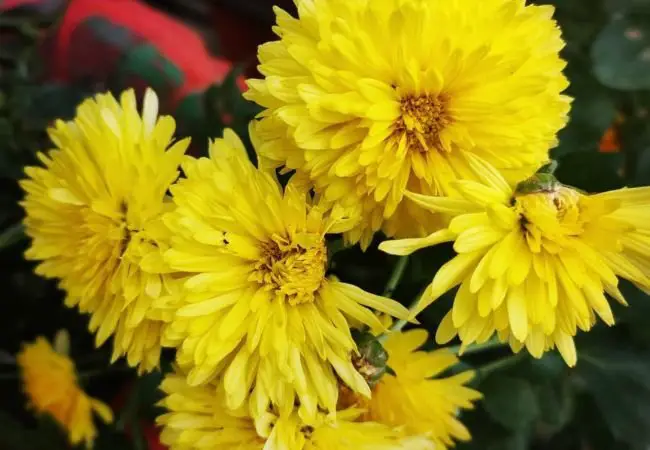Purple Hawaiian flowers are a captivating aspect of the islands’ diverse flora, ranging from delicate native species to vibrant introduced plants. These violet-hued blossoms not only enhance Hawaii’s breathtaking landscapes but also play crucial roles in local ecosystems and cultural practices. In this comprehensive 2024 guide, we’ll explore the most notable purple flowers of Hawaii, their significance, and how to appreciate them responsibly.
As a botanist with over two decades of experience studying and cultivating Hawaiian plants, I’m thrilled to share my expertise and personal insights into these magnificent blooms. Let’s embark on a colorful journey through Hawaii’s purple floral wonders!
The Allure of Purple Hawaiian Flowers
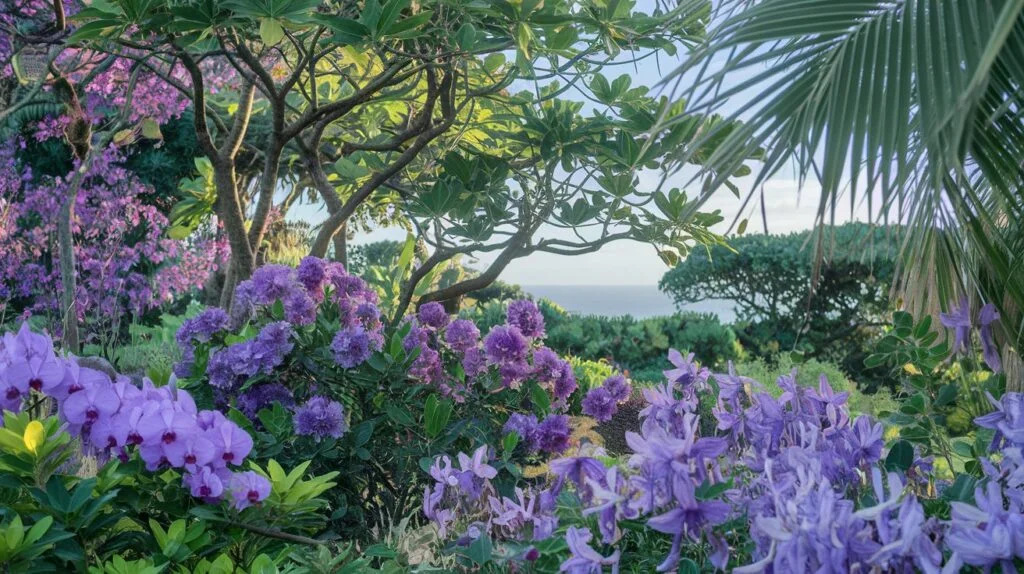
Hawaii’s volcanic islands, with their varied microclimates and isolated evolution, have given rise to a unique botanical paradise. Purple flowers, in particular, stand out against the lush green backdrop of tropical forests and sun-drenched beaches. These blooms range from tiny, hidden gems to large, showy flowers that demand attention.
Why Purple?
The color purple in nature often signifies:
- Rarity and uniqueness
- Attraction for specific pollinators
- UV protection in high-altitude environments
- Cultural and spiritual significance
In Hawaiian culture, purple is associated with royalty and spiritual power, making these flowers especially revered.
Native vs. Introduced Species: A Crucial Distinction
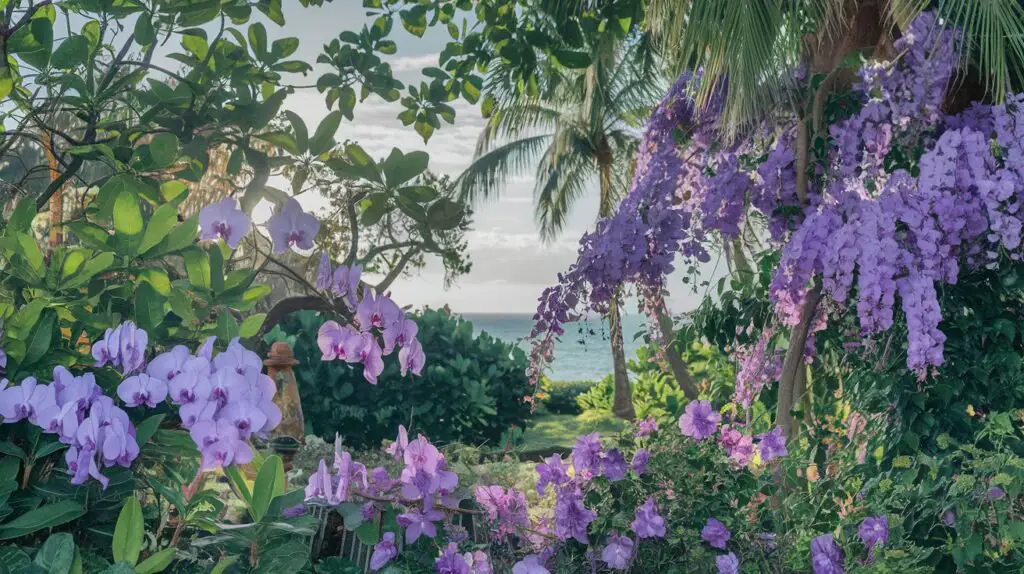
When discussing Hawaiian flora, it’s essential to understand the difference between native and introduced species:
- Native species: Plants that evolved in Hawaii over millions of years, uniquely adapted to the islands’ environments.
- Introduced species: Plants brought to Hawaii by humans, either intentionally or accidentally, since Polynesian settlement.
While both types contribute to Hawaii’s current biodiversity, native species are of particular importance for conservation efforts and maintaining the islands’ unique ecosystems.
Top Purple Hawaiian Flowers to Discover in 2024
1. Hawaiian Violet (Viola chamissoniana)
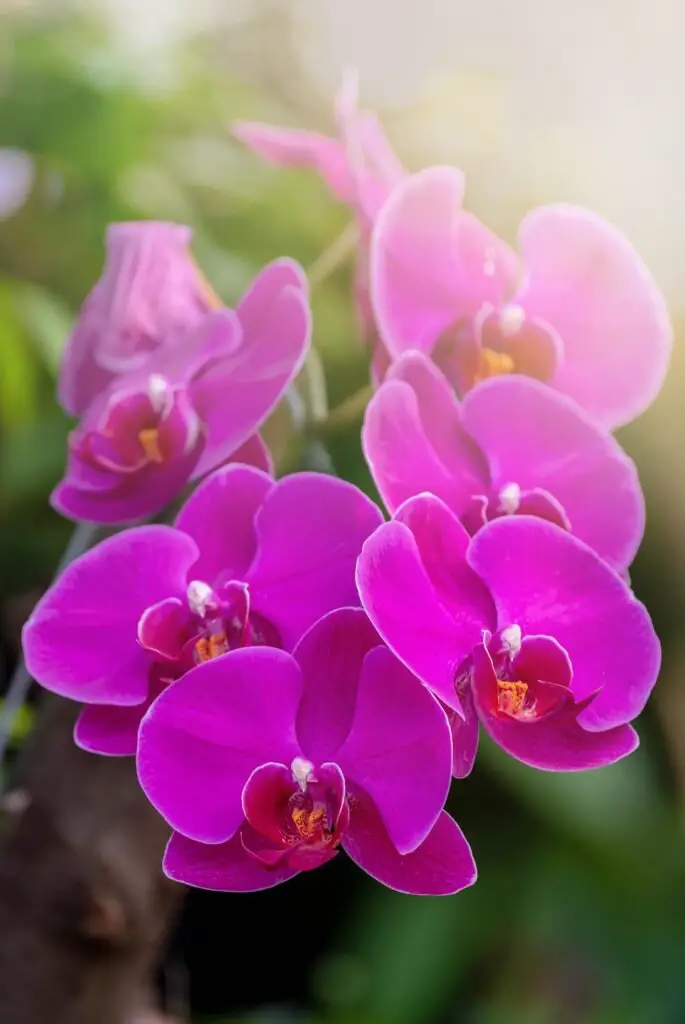
Native Status: Endemic to Hawaii
Hawaiian Name: ʻOlopu
The Hawaiian violet is a delicate native species found in high-elevation forests, particularly on Oʻahu and Molokaʻi. Its small, purple flowers are a rare and cherished sight for hikers and nature enthusiasts.
2024 Conservation Status: Threatened due to habitat loss and invasive species. Look for new protective measures being implemented in Koʻolau and Waiʻanae mountain ranges.
2. Purple Hibiscus (Hibiscus syriacus)
Native Status: Introduced
Popular Variety: “Lil’ Kim Violet”
While not native to Hawaii, the purple hibiscus has become a popular ornamental plant since its introduction. Its large, showy flowers make it a favorite for landscaping and lei-making.
2024 Trend: Increasing popularity in drought-resistant landscaping projects across the islands.
3. Honohono Orchid (Dendrobium anosmum)
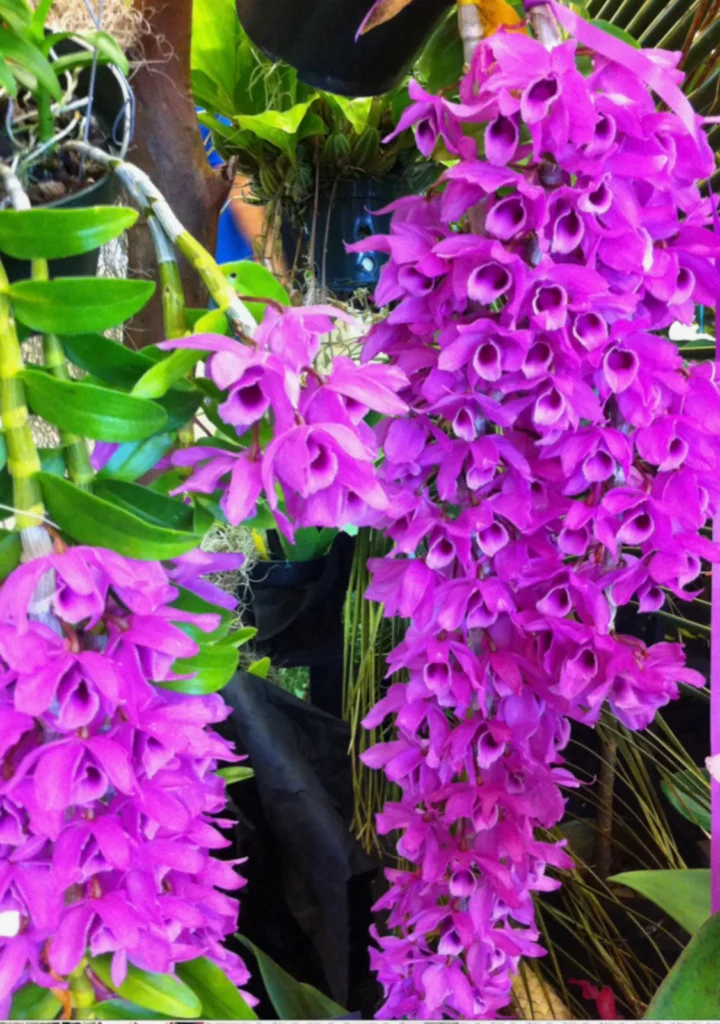
Native Status: Introduced
Also Known As: Filipino Ground Orchid
This fragrant orchid produces cascades of purple flowers, often seen growing on tree branches or in hanging baskets. Its sweet scent is particularly noticeable in the early morning.
2024 Update: New cultivation techniques are making this orchid more accessible for home gardeners.
4. Beach Naupaka (Scaevola taccada)
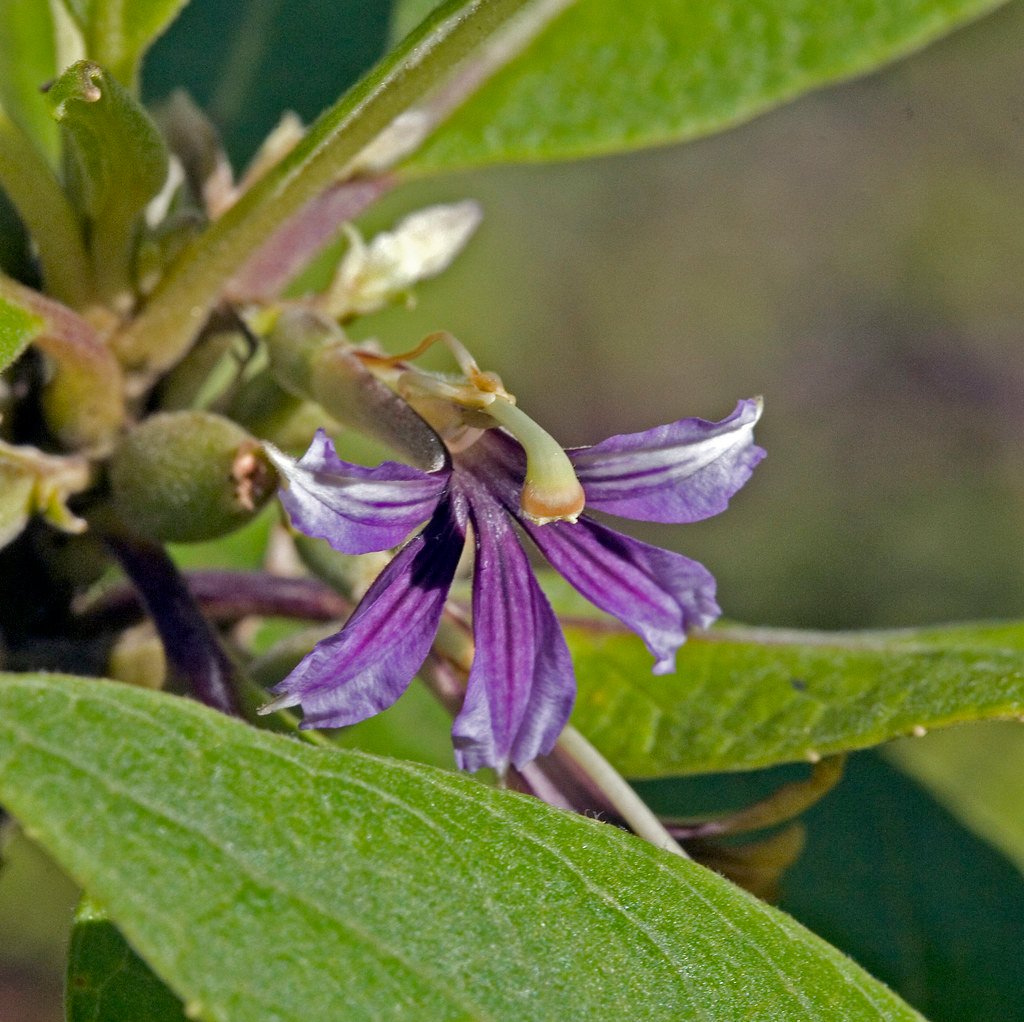
Native Status: Native to Hawaii and other Pacific islands
Hawaiian Name: Naupaka kahakai
The beach naupaka features small, purple-tinged white flowers that look like they’ve been cut in half. This native plant plays a crucial role in stabilizing coastal dunes.
2024 Focus: Increased use in coastal restoration projects to combat erosion due to rising sea levels.
5. Hawaiian Silversword (Argyroxiphium sandwicense)
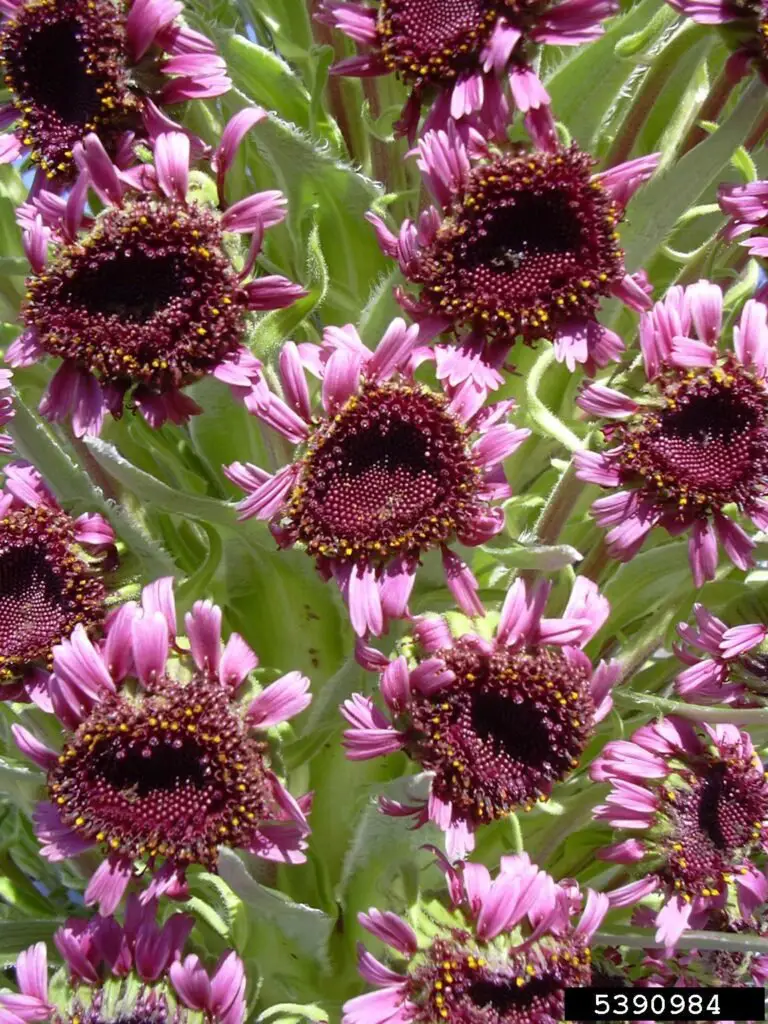
Native Status: Endemic to Hawaii
Hawaiian Name: ʻĀhinahina
While primarily known for its silvery leaves, the endangered silversword produces a tall stalk with hundreds of small purple flowers when it blooms, which happens only once in its lifetime.
2024 Conservation Effort: New visitor management strategies at Haleakalā National Park to protect remaining populations.
Discover Fascinating Facts About Pink Hawaiian Flowers
Cultural Significance of Purple Hawaiian Flowers in 2024
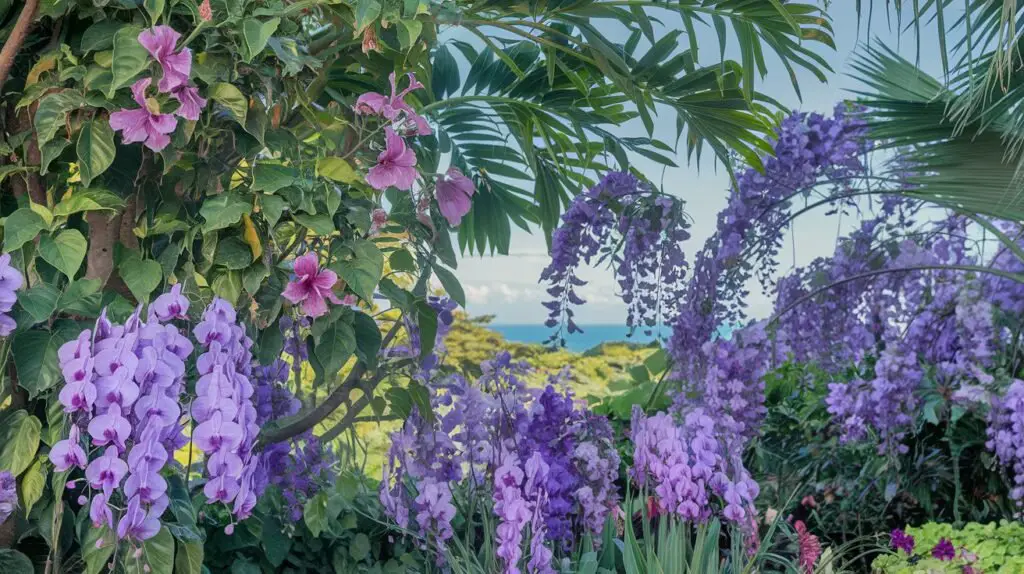
Purple flowers continue to hold special meaning in Hawaiian culture:
- Lei-making: Purple flowers like orchids and bourgainvillea are prized for creating stunning lei. In 2024, look for innovative lei-making workshops that combine traditional techniques with sustainable practices.
- Hula: Certain purple flowers are used in hula performances and for adorning dancers. The 2024 Merrie Monarch Festival will feature a special showcase of dances highlighting endangered native plants.
- Traditional medicine: Some native purple flowers have been used in Hawaiian herbal remedies. In 2024, there’s renewed interest in studying these plants for potential pharmaceutical applications, with strict ethical guidelines to protect traditional knowledge.
Conservation Efforts: What’s New in 2024
As climate change and habitat loss continue to threaten Hawaii’s native flora, conservation efforts are more crucial than ever:
- Advanced Propagation Techniques: New methods for propagating difficult-to-grow native species are showing promise in 2024.
- Community-Led Conservation: Increased focus on involving local communities in conservation efforts, combining traditional ecological knowledge with modern science.
- Sustainable Tourism Initiatives: New programs educating visitors about responsible plant appreciation and conservation.
- Invasive Species Management: Cutting-edge technologies for early detection and rapid response to new invasive plant threats.
How You Can Help
- Support local conservation organizations through donations or volunteering.
- Learn to identify and appreciate native species.
- Practice responsible tourism when visiting natural areas.
- Consider planting native species in your garden if you live in Hawaii.
Growing Purple Hawaiian Flowers at Home: 2024 Tips
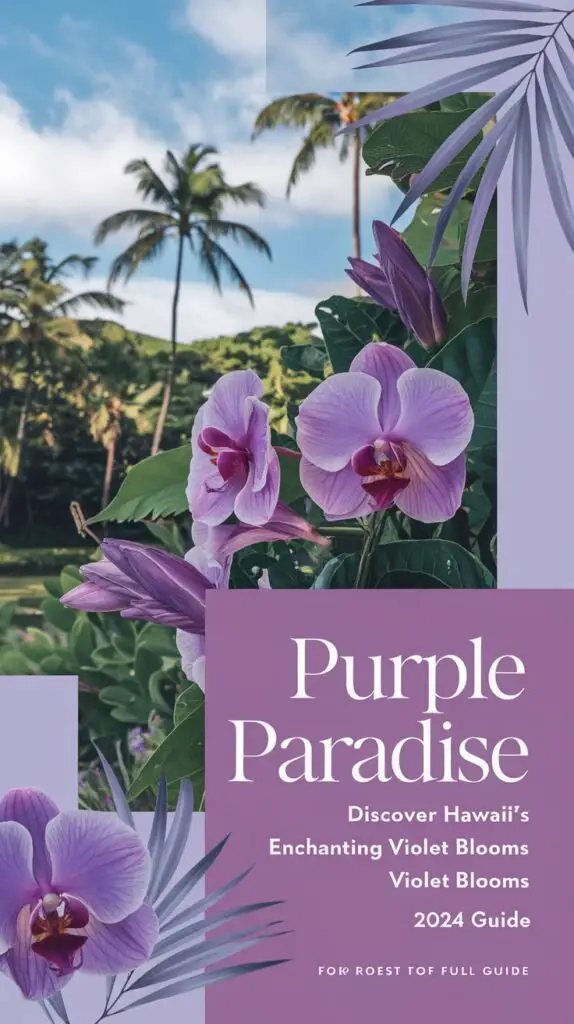
For those interested in cultivating these beauties:
- Research each species’ specific needs, considering factors like light, water, and soil pH.
- Use well-draining soil mixes designed for tropical plants.
- Implement water-conserving techniques like mulching and drip irrigation.
- Experiment with vertical gardening for space-efficient orchid displays.
Enjoying Purple Hawaiian Flowers Responsibly in 2024
When encountering these flowers in the wild:
- Take photos, not specimens.
- Stay on designated trails to prevent habitat damage.
- Respect any posted signs or restrictions.
- Use plant identification apps to learn about species you encounter.
- Share your knowledge and experiences on social media to promote conservation awareness.
Conclusion: The Future of Hawaii’s Purple Blooms
As we navigate the challenges of climate change and habitat preservation in 2024, Hawaii’s purple flowers remain a symbol of the islands’ natural beauty and resilience. By understanding, appreciating, and protecting these magnificent blooms, we can ensure that future generations will continue to be inspired by the purple paradise of Hawaii.
Remember, every time you admire a purple flower in Hawaii, you’re not just seeing a pretty bloom – you’re witnessing millions of years of evolution, adaptation, and cultural significance. Let’s all do our part to keep this legacy thriving for years to come.
For those eager to dive deeper into the world of Hawaiian botany, the University of Hawaii Botany Department offers extensive resources and research opportunities. Additionally, the Hawaii Department of Land and Natural Resources provides valuable information on conservation efforts and native plant species.

